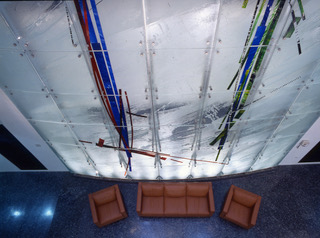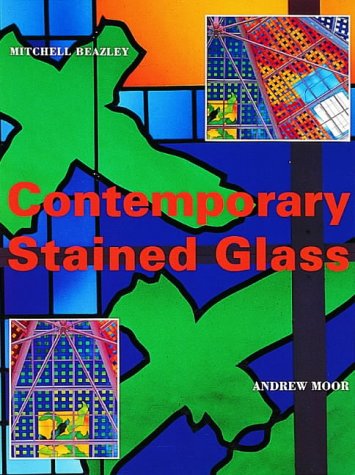Contemporary Stained Glass Book “Contemporary Stained Glass” A book by Andrew Moor
When my first book “Contemporary Stained Glass” was published in 1989, no one had done a book like this before, and it immediately became a worldwide success, selling more than 30,000, mainly within the small glass-art world. In a single book, you could immediately grasp how this unique art form had evolved over the twentieth century. You could see the work of all the leading artists of the time and the works of their immediate predecessors. But, despite this success, the book did not arrest the slow erosion of stainless glass into an increasingly marginalised industry.

Stained glass is a technique profoundly associated with medieval architecture and its nineteenth century revival. But, contrary to these associations, stained glass can be a wonderful medium for the realisation of contemporary design and, because it is made with a completely hand-made material, it has the animation and the life that is exactly what we do NOT receive from industrially manufactured materials. Each single piece of glass has its own unique flavour, colour and texture.

Stained glass remains one of those subjects, a bit like ceramics, that people love to take up as a hobby. The richness of the colours, the way sunlight can bring a window so dramatically to life, and the long association of stained glass with sacred spaces, all give the medium an almost magical appeal. But, despite all this sentiment, the reality is it is rarely used outside churches, synagogues, and mosques.


